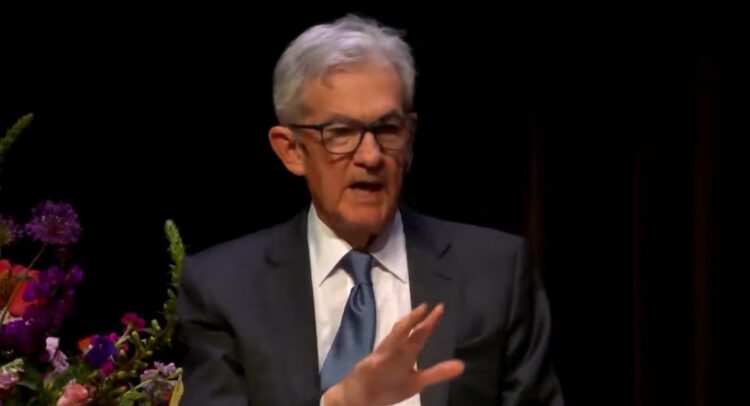Federal Reserve Chair Jerome Powell left no doubt that the U.S. central bank intends to be quite patient before it acts to reduce high interest rates. Speaking at the annual general meeting of the Foreign Bankers’ Association in Amsterdam, Powell said that inflation has remained high for longer than anticipated. This has prompted the Fed to maintain current levels of interest rates for a longer period than initially projected.
This confirmation of the Fed’s current stance, last presented on May 1 after an FOMC meeting, comes in the wake of a series of economic reports that paint a picture of persistent inflationary pressures.
Powell Acknowledges Inflationary Challenges
Powell said, “Inflation has been running higher than we had expected,” drawing attention to the central bank’s frustration at bringing inflation under control.
The Fed’s primary tool for combating inflation is to increase the cost of money via higher interest rates. This approach initially proved effective when inflation fell sharply from a peak of 9.1% in June 2022. The Fed’s inflation goal is 2% per year. Most inflation measures are well below the highs of 2022, but still well above 2%.
During his candid discussion, Powell was clear on his stance that monetary policy is restrictive enough to address inflation while acknowledging that it will take longer than initially anticipated to see the desired results.
The Fed’s Soft Landing in Distance
While the Fed had previously signaled its expectations to lower rates throughout 2024, Powell’s recent comments suggest that this period of monetary tightening is likely to extend into 2025. This extended timeline for notching down rates underscores the Fed’s resolve in its fight against inflation.
The Fed’s revised timeline necessitates a corresponding adjustment in investor expectations.
Implications for Investors
Investors should consider resisting rate-cut expectations soon and should prepare themselves for a longer period of elevated rates. An extended period without a rate drop has implications for the stock market, bond markets, and the broader economy.
Higher interest rates can lead to increased stock market volatility, as investors adjust their portfolios to account for expected weakness in corporate growth. This may result in pockets of unpredictable risk aversion and a preference for more defensive investments.
The bond markets are even more directly impacted if rates don’t come down as originally expected. This is because bonds rally when rates decline. Conversely, increasing yields trigger a sell-off in bonds. If rates are expected to decrease, bond buyers are more inclined to invest heavily. However, if the Fed maintains its current stance, bond investors may reduce their positions, potentially leading to a sell-off.
Economic growth is also impacted by the Federal Reserve’s commitment to maintaining a restrictive monetary policy. Higher interest rates slow down borrowing and investment, potentially leading to slower GDP growth and higher unemployment.
Key Takeaway
Federal Reserve Chair Jerome Powell’s recent speech in Amsterdam has provided valuable insights into the current state of the economy and the central bank’s approach to addressing inflation. As investors navigate this challenging environment, they should be prepared for a longer period of elevated interest rates and adapt their investment strategies accordingly.
















